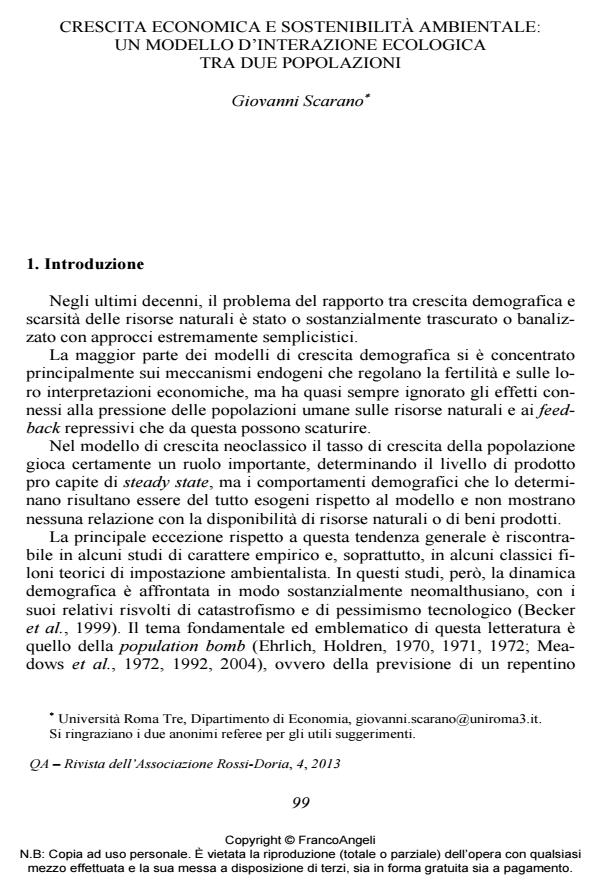Crescita economica e sostenibilità ambientale: un modello d’interazione ecologica tra due popolazioni
Titolo Rivista QA Rivista dell’Associazione Rossi-Doria
Autori/Curatori Giovanni Scarano
Anno di pubblicazione 2014 Fascicolo 2013/4
Lingua Italiano Numero pagine 17 P. 99-115 Dimensione file 354 KB
DOI 10.3280/QU2013-004004
Il DOI è il codice a barre della proprietà intellettuale: per saperne di più
clicca qui
Qui sotto puoi vedere in anteprima la prima pagina di questo articolo.
Se questo articolo ti interessa, lo puoi acquistare (e scaricare in formato pdf) seguendo le facili indicazioni per acquistare il download credit. Acquista Download Credits per scaricare questo Articolo in formato PDF

FrancoAngeli è membro della Publishers International Linking Association, Inc (PILA)associazione indipendente e non profit per facilitare (attraverso i servizi tecnologici implementati da CrossRef.org) l’accesso degli studiosi ai contenuti digitali nelle pubblicazioni professionali e scientifiche
Il paper propone un’analisi delle relazioni tra crescita economica, crescita demografica e capacità di carico degli ecosistemi naturali effettuata con un approccio di economia ecologica. Partendo dall’integrazione di un tipico modello di crescita economica, in cui il progresso tecnologico è volto a compensare la ridu- zione della produttività marginale del capitale, con il modello di crescita logistica della popolazione, si introduce l’effetto di una risorsa naturale rinnovabile, trattata come una popolazione biologica in interazione ecologica con la popolazione umana. Lo scopo del paper è l’analisi delle condizioni di crescita sostenibile che emergono dal modello di interazione lineare delle due popolazioni. La connessione tra gli aspetti biologici e quelli economici del modello è effettuata integrando il concetto di capacità di carico per la popolazione umana con quello di sussistenza, un concetto proprio dell’economia "classica" pienamente coerente con un’analisi demografica di tipo malthusiano
Parole chiave:Crescita economica, Crescita demografica, Capacità portante, Sussistenza, Risorse rinnovabili
Giovanni Scarano, Crescita economica e sostenibilità ambientale: un modello d’interazione ecologica tra due popolazioni in "QA Rivista dell’Associazione Rossi-Doria" 4/2013, pp 99-115, DOI: 10.3280/QU2013-004004